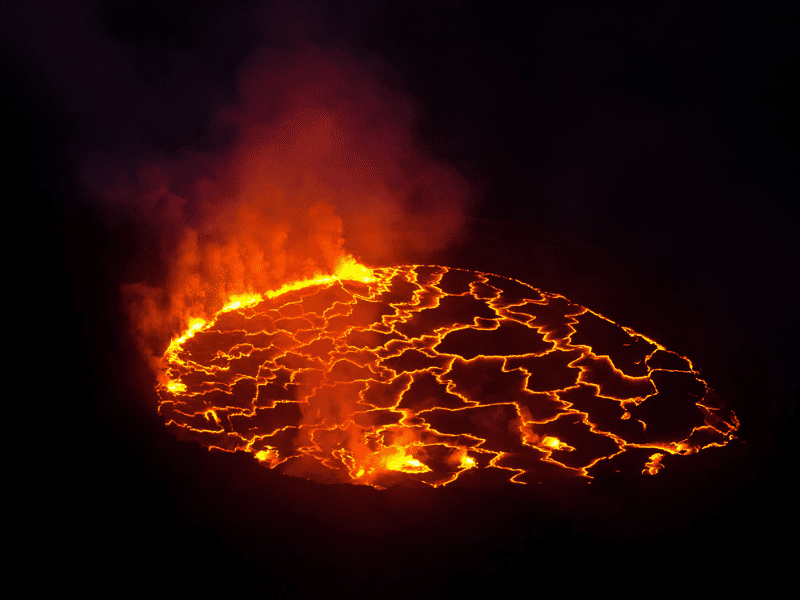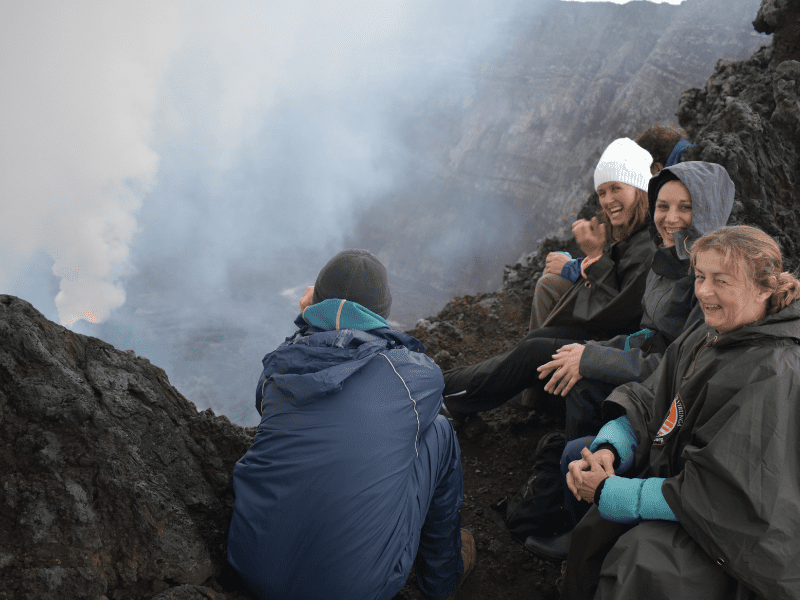Hiking Volcanoes



Introduction
National Geographic describes Volcanoes as Earth’s geologic architects, and we couldn’t have said it better ourselves. Their explosive eruptions shape the earth, creating both mountains and craters. You don’t need to be a volcanologist to be fascinated by these wonders of nature. Volcanoes helped forge the Earth, and even today some volcanoes are still considered sacred. Witnessing the bubbling molten lava of an active volcano up close is a pretty thrilling sight. Whether it’s the pure exhilaration of summiting an active volcano, or the spectacular views you seek from the summit of a dormant one, we’ll take your sense of adventure to new heights with these vigorous climbs.
Mount Nyiragongo
Nyiragongo is a beautiful stratovolcano that features the world’s largest lava lake. The volcano’s forested lower slopes are home to a variety of animals, including chimpanzees, monkeys, and bushbuck. Nyiragongo’s summit rim is largely devoid of vegetation and is sometimes dusted with snow. From the rim, visitors can peer down into a churning lava lake and see and hear hot gases exploding up though a mosaic of molten lava.
The trek is steep and tough, but typically takes 4 – 6 hours. Altitude sickness can be an issue for some because the climb begins at 1989m (6,525 ft) and ascends to 3470m (11,382ft) in a short time. Climbers will overnight in the simple summit shelters on the rim of the crater, before descending the following morning.
NOTE: Nyiragongo is not currently accessible as of 21/10/2021 due to recent volcanic activity. Please check with our travel designers on whether or not it is possible to climb it when you book.
Ol Doinyo Lengai – Tanzania – Active
Ol Doinyo Lengai, known by the local Maasai as “Mountain of God”, is an active volcano south of Lake Natron, in Northern Tanzania. Part of the East African Rift Valley, it uniquely produces natrocarbonatite lava. An overnight ascent to the summit is not for the faint hearted, but the moonlight climb is truly a mystical experience. At 2962m, this is one of the most challenging one day climbs in Africa. The tips of Kilimanjaro and Meru pierce through the horizon, and the sunrise you are rewarded with is simply spectacular!
Mount Gahinga – Uganda – Dormant
At 3,474m, Mt. Gahinga is the smallest of the Virunga volcanoes. This climb takes around 6 hours in total including ascent and descent. Mt Gahinga is topped by a swamp-filled crater and giant lobelia. Lucky climbers may spot golden monkeys on their climb through the bamboo forest. (Mgahinga National Park)
Mount Sabinyo – Uganda – Dormant
The climb up Mt Sabinyo (3,669m), is a 14km round trip and takes about 8 hours to cover, following a steep ridge up to the peak. (Mgahinga National Park)
Mount Muhavara – Uganda – Inactive
The climb up massive Mt. Muhavura (4,127m peak), is a 12km round trip and takes around eight hours to cover. Once at the top, hikers are rewarded on a clear day with views of the Virunga Volcanoes, Lake Edward, Bwindi Impenetrable Forest and the peaks of the Rwenzoris.
Mount Bisoke – Rwanda – Active
This hike, taking approx. 6 hours (4 hours ascent and 2 hours descent) brings you to a spectacular crater lake at the top of the volcano.
Mt. Karisimbi – Rwanda – Dormant
Rising to 4507m, Mt. Karisimbi is the highest volcano in the Virungas. A white-capped summit can often be seen on top of this stratovolcano. This climb is very strenuous, navigating through the Bisoke side, and camping overnight before finishing off the hike the next day. The hike is characterized by muddy trails (through dense forest at its base to barren volcanic core at the summit) due to the altitude which causes rain at any time of the day. Climbers need to be fit and it’s recommended to hire a porter ($20 per day) to assist with your climb.
Mount Muhabura – Rwanda – Extinct
Standing at 4,127m, climbing Mt. Muhabura is no joke. It is the steepest of all the 8 Volcanoes found in this region. It can be hiked within one day, and tourists are rewarded with breath-taking views of the other Volcanoes and the Twin Lakes of Ruhondo and Burera. The hike is divided into two stops (each with a hut) before reaching the summit. The peak is cold and misty but you may still be tempted to swim in the Crater Lake found next to its summit.
